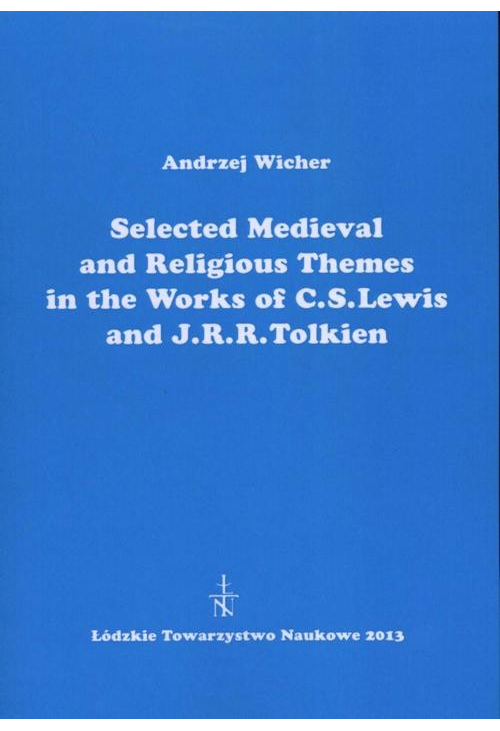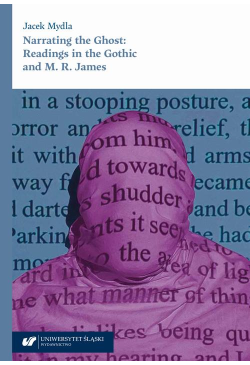
- -22%
ebook Selected Medieval and Religious Themes in the Works of C.S. Lewis and J.R.R. Tolkien
Wydania elektroniczne "Selected Medieval and Religious Themes in the Works of C.S. Lewis and J.R.R. Tolkien" autorstwa Andrzeja Wichera, wydane przez Łódzkie Towarzystwo Naukowe w 2013 roku, to fascynująca podróż w świat literacki dwóch wybitnych umysłów: C.S. Lewisa i J.R.R. Tolkiena. Ebook ten skupia się na analizie motywów średniowiecznych i religijnych w ich dziełach, co czyni go niezwykle cennym dla miłośników literatury fantastycznej oraz badaczy kultury.
Książka elektroniczna ta, dostępna w formatach PDF i innych cyfrowych, stanowi doskonałe źródło wiedzy dla tych, którzy chcą zgłębić wpływ chrześcijaństwa na twórczość Lewisa i Tolkiena. Ebook "Selected Medieval and Religious Themes in the Works of C.S. Lewis and J.R.R. Tolkien" to must-have dla czytelników zainteresowanych tajemnicami literackiego geniuszu obu autorów oraz ich niezwykłymi interpretacjami religii w kontekście fantastycznych światów.
Zakup e-booka i pobierz go teraz, aby zanurzyć się w fascynującym świecie literackim dwóch klasyków XX wieku. Odkryj najlepsze ebooki dostępne w sklepie z ebookami i ciesz się wygodnym czytaniem na różnych urządzeniach.
Spis treści ebooka Selected Medieval and Religious Themes in the Works of C.S. Lewis and J.R.R. Tolkien
Preface .........................7Chapter 1
A Comparison of J. R. R. Tolkien’s and C. S. Lewis’s Modes of Thinking
as exemplifi ed by The Lord of the Rings and The Chronicles of Narnia ...15
Chapter 2
Some Medieval Aspects of the Theme of Friendship and Love in The Horse and His Boy by C. S. Lewis .........................................61
Chapter 3
The Discourse of Orientalism in C. S. Lewis’s Chronicles of Narnia ........75
Chapter 4
“Nylons, Lipstick, and Invitations” – on the Question of Identity
in Narnia ...........................93
Chapter 5
Planetary Symbolism in C. S. Lewis’s
The Voyage of the Dawn Treader .......105
Chapter 6
The Image of Hell as a Hidden City
in C. S. Lewis’s The Great Divorce ...127
Chapter 7
Some Boethian and Ecclesiological Themes in C. S. Lewis’s Screwtape
Letters ..................................147
Chapter 8
The Problem of the Legitimacy and Topicality of the Fears for the Future
of Civilization Expressed in C. S. Lewis’s That Hideous Strength ...........165
Chapter 9
C. S. Lewis’s Conception of Historicism and its Consequences
– Particularly with Regard to The Last Battle ..........................................197
Chapter 10
Grief and Pain Observed and Revised in Selected Writings
by C. S. Lewis ..........................207
Chapter 11
Tolkien’s Indolent Kings – Echoes of Medieval History
in J. R. R. Tolkien’s Lord of the Rings ......215
Chapter 12
J. R. R. Tolkien’s Farmer Giles of Ham as an Anti-Beowulf
– a Study in Tolkien’s Comical Spirit ..........231
Chapter 13
Tolkien’s Story of Beren and Lú thien in the Light of Medieval Romances,
Sir Orfeo in Particular, and Tales of Magic .............................................245
Chapter 14
What Exactly does Tolkien Argue for in Beowulf: The Monsters and the
Critics? – an Attempt at a Metacriticism .................................267
Chapter 15
A Discussion of the Nature of J. R. R. Tolkien’s Quarrel
with Modernity. ............................288
Chapter 16
Therapeutic Categories. Some Remarks on the Relationship between
Tolkien’s “Eucatastrophe” and Aristotle’s “Catharsis” ............................295
Conclusion ...............................303
Bibliography .........................309
Szczegóły ebooka Selected Medieval and Religious Themes in the Works of C.S. Lewis and J.R.R. Tolkien
- Wydawca:
- Łódzkie Towarzystwo Naukowe
- Rok wydania:
- 2013
- Typ publikacji:
- Ebook
- Język:
- angielski
- Format:
- Liczba stron:
- 320
- Miejsce wydania:
- Łódź
Recenzje ebooka Selected Medieval and Religious Themes in the Works of C.S. Lewis and J.R.R. Tolkien
-
Reviews (0)

Na jakich urządzeniach mogę czytać ebooki?
- -22%















@CUSTOMER_NAME@
@COMMENT_TITLE@
@COMMENT_COMMENT@